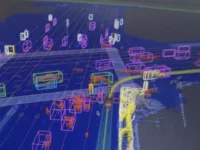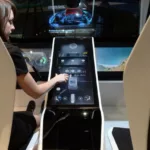In the last decade technology has enabled more and more futuristic features to become part of our everyday lives. The development of cars and the technology within them is one such example of how this has enhanced our lives and in 2016 we expect to see more and more evidence of self-drive cars and features becoming available on the market.
Many people are sceptical of self-drive cars and autonomous driving software, especially where instances of the software failing has occurred. Less than a week into Tesla’s roll out of its autopilot software, there were several reports showing how the cars veered out of lanes when the driver moved his or her hands from the steering wheel.
Evolving technology
Self-driving cars may well have their issues but the concept of using a range of sensors both inside and outside the vehicle to maintain its speed, keep a safe distance from the car in front and even change lanes automatically is revolutionary. Also known as autonomous cars, driverless or robotic cars, they use technologies such as radar, LIDAR, GPS, Odometry, and computer vision to make judgements on how the car should be driven. The technology is developing faster than some may realise and we should expect to see big strides forward in the coming 12 months.
Google car
Google is already all-powerful in many ways but could its self-driving car be the way we travel in the near future? Google hopes that by developing these vehicles it can “transform mobility for millions of people” and reduce accidents caused by human error. A report by US consulting firm McKinsey & Company analysing the impact of driverless cars on the incidence of fatal traffic accidents said that by taking human emotions and errors out of the equation could reduce deaths on the road by 90 per cent. Others are not convinced about the safety of self-driving cars. Expect this debate to rumble on throughout 2016.
Self–parking
The manoeuvres element might be the one part of the driving test that we all dread, but it is a necessary part if you want to pass. There are an increasing number of cars on the market that will automatically park your car for you, using radars to sense your car’s position in relation to other vehicles and objects so it is virtually “impossible” to have a prang. These are becoming more and more commonplace and should help drivers of all abilities to work their way into tight spots.
Anti–skid technology
Since 2014 it has been mandatory that every new car in the EU must be fitted with this technology. Renault-Nissan is planning to boost its offering further to enable vehicles to navigate themselves in complex inner city traffic; while Subaru utilises built-in cameras to monitor activity on the road ahead, helping to identify potential danger and provide assistance to its driver when needed – such as Adaptive Cruise Control, Pre-Collision Braking and Sway Warning.
Future ventures
Apple is in development of its very own self-drive electric car – rumoured to be with the help of BMW although neither company has fully confirmed this. Going forward, while most self-driving cars have required an array of expensive and custom processing hardware, Nvidia is aiming to change all that with the introduction of its Drive PX, an extremely powerful computer that easily fits into the boot of your car and could revolutionise this industry even further.
While the technology continues to come on in leaps and bounds, it’s unlikely to take hold at a consumer level in 2016. Learners will still need to study for their theory test and master all of the manoeuvres required to handle a vehicle on the roads. 2016 will push self-drive cars closer to becoming a reality, but this won’t be the year they revolutionise the way we all drive.








